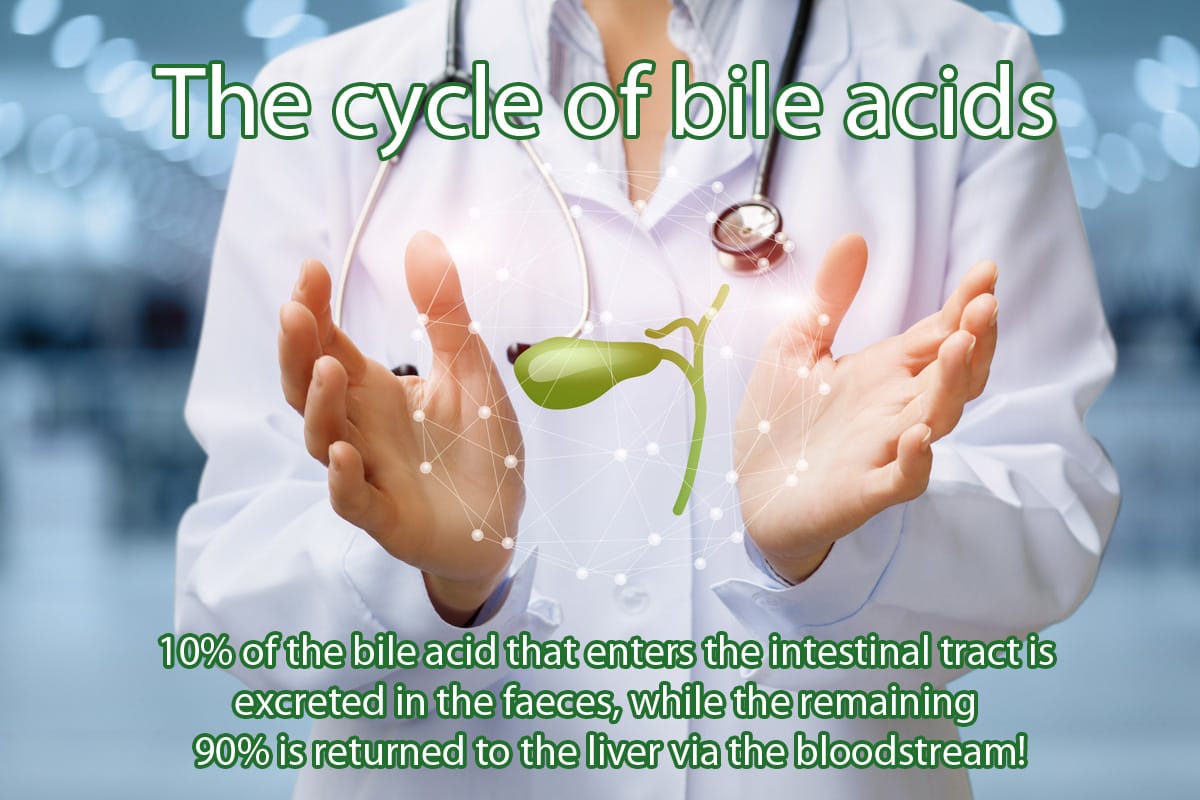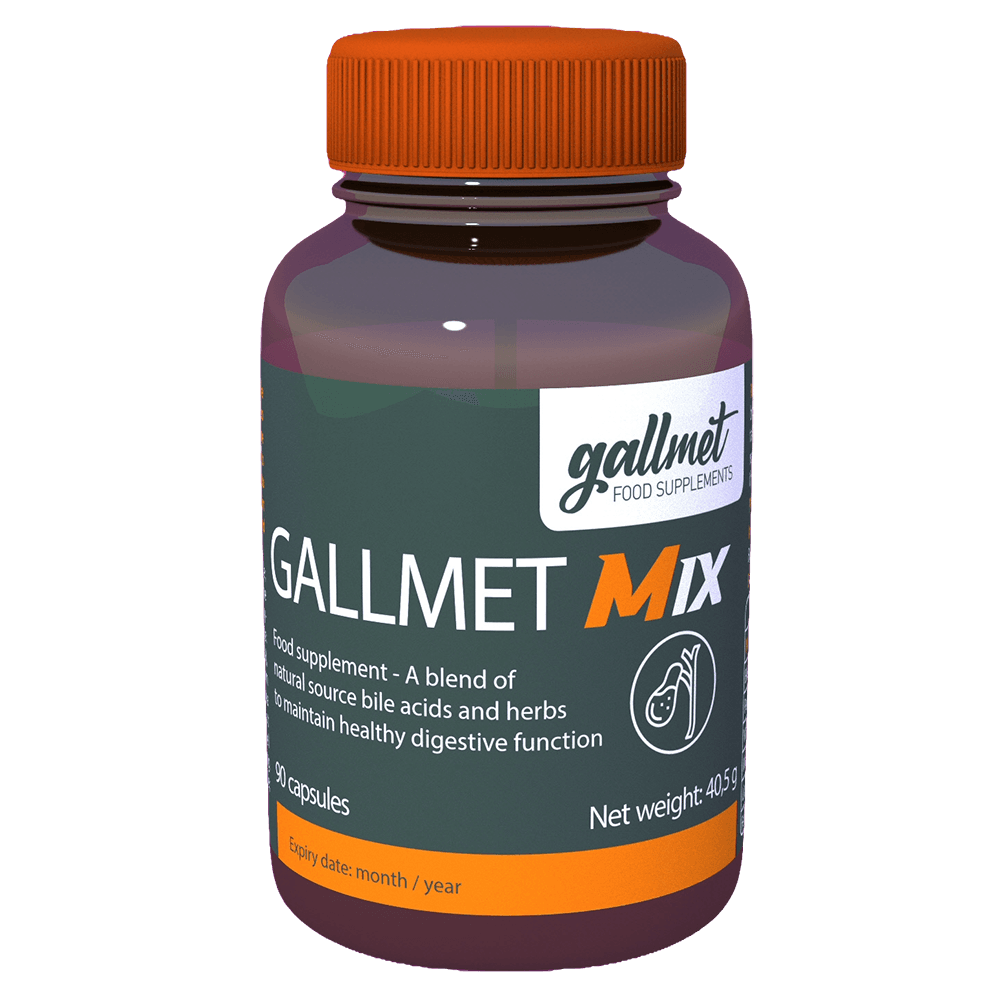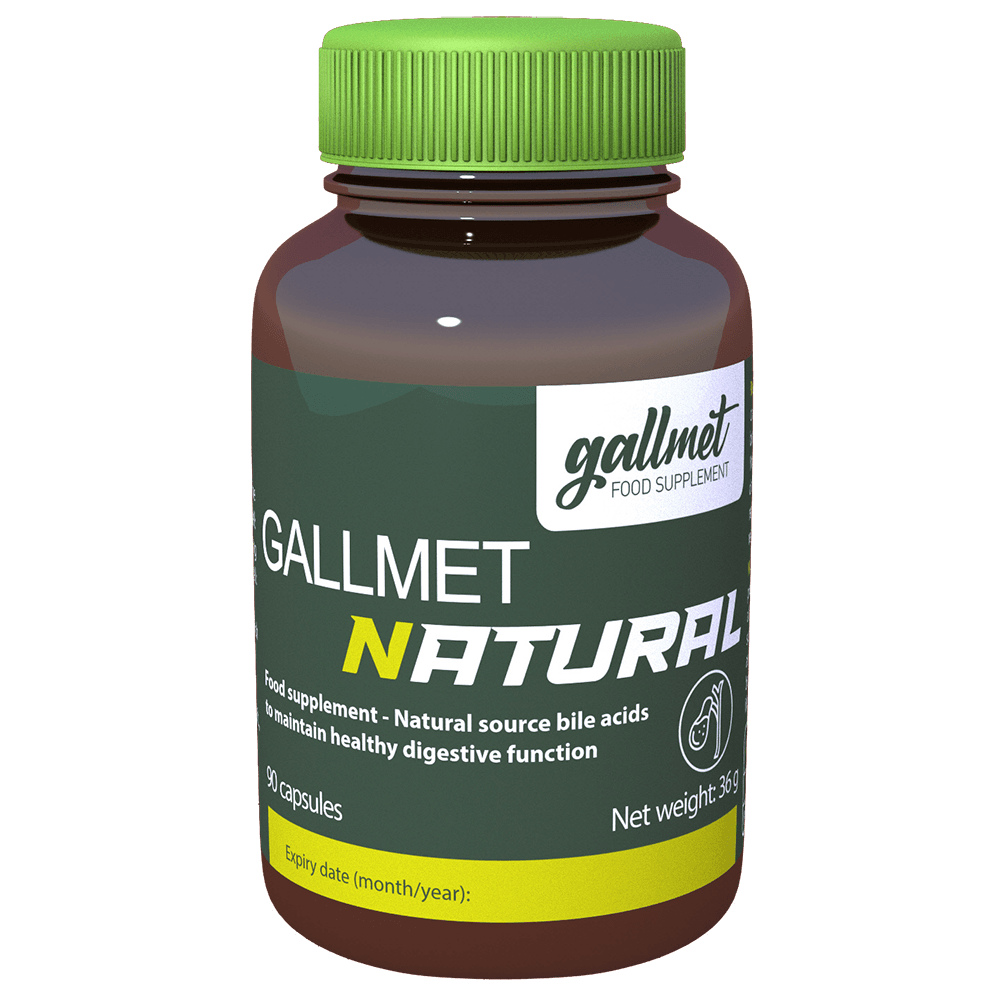The role of bile acids in our quality of life - the cycle of bile acids

Bile, which is made by the liver and contains colic acid, is stored in the gall bladder. When food is eaten, it is passed from the stomach to the duodenum, where the digestive process, prepared with saliva and stomach acid, continues.
From the pre-digested food in the duodenum, a cholecystokinin control is given to the gallbladder from the duodenal mucosa, whereupon bile is transported to the duodenum via the bile ducts that end in the duodenum, to break down fats and proteins. At the same time, pancreatic enzymes are also transported to the duodenum. The food being digested by the bile acids and pancreatic secretions passes on to the small and then the large intestine, while the hydrochloric acid is converted into deoxycholic acid. Approximately 10% of this is eliminated from the body in the faeces, while the remaining approximately 90% is returned to the bloodstream to the liver, where deoxycholic acid is converted back to colic acid and the process starts again, i.e. cyclically repeats: enterohepatic circulation = bile circulation.
If due to age, lifestyle, illness, or pregnancy this process does not function properly, digestive problems may occur (bloating, constipation, diarrhea, aching under the right ribcage, lightened stool, pain radiating to the back, stabbing sensation, etc.) and gallstone formation begins.
In bile problems, women are affected approximately twice as often as men. The more sensitive nervous system of women and stress also play a role in this. The Oddi sphincter, which ensures the passage of bile fluid from the gallbladder, does not open properly due to stress, causing the bile fluid to become trapped in the gallbladder where it can thicken, which also increases the risk of gallstones.
If the intestines do not receive a sufficient amount of bile acids, the neutralization of endotoxins (internal poisons) from the cell walls of dead gram-negative bacteria does not occur. This can cause inflammation in the body in the long term, which can lead to intestinal diseases or even dermatological problems (psoriasis, eczema, acne-prone skin, dry skin).
GALLMET bile acid capsules can compensate for and alleviate disturbances in the bile cycle after gallstones and biliary surgery on a causal basis.
Soft, cholesterol stones smaller than about 15 mm may well be dissolved by taking bile acids.
After gallbladder surgery, there is a lack of sufficient bile acid for fat and protein breakdown during meals. This is because the produced bile fluid continuously trickles into the duodenum - as there is no gallbladder to collect it. This can lead to the digestive problems previously listed, which can be compensated for by bile acid supplementation and supporting the bile circulation.
The physiological significance of bile acids and their link to digestion and the enterohepatic cycle (cycle of bile acids) - Video
Our advisory phone number: 06-79-326-581
The physiological significance of bile acids and their link to digestion and the enterohepatic circulation (cycle of bile acids)
Author, speaker and product developer (www.gallmet.hu and www.antibacvir.hu): Dr. Antal Miklós Várhalmi
Source: Vitality TV Extra - March 2022 show
Read / download the text of the presentation (22 pages) in PDF format Click HERE!
Gallmet bile acid capsules contain similar amounts of bile acids, but GALLMET-Mix also contains herbal extracts that support digestion, while GALLMET-Extra contains digestive enzymes and herbal extracts that also support digestion.







